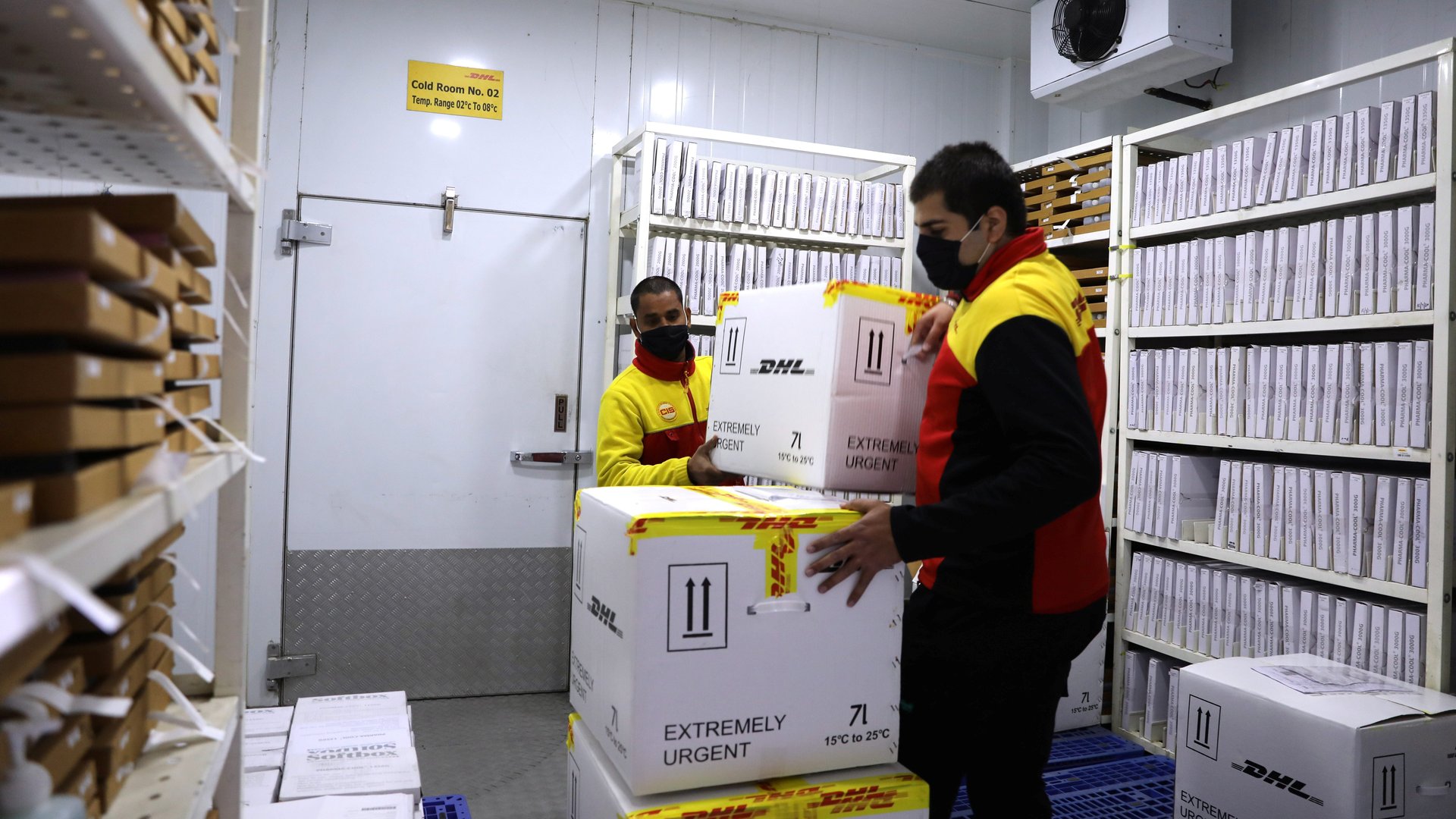The Modi government has set out a plan to vaccinate the first 30 million Indians for Covid-19
A concrete Covid-19 vaccine distribution plan is finally taking shape in India.


A concrete Covid-19 vaccine distribution plan is finally taking shape in India.
Once a vaccine is available in the country, the government plans to immunise 30 million citizens—10 million healthcare workers in private and government-owned hospitals, and 20 million frontline workers that includes police, defence, and municipal workers—in the first round, according to a Dec. 8 press release from the ministry of health and family welfare.
So far, three vaccine makers have applied for an emergency use authorisation of their coronavirus vaccines in India. These are Pfizer, Serum Institute of India, which is manufacturing the Oxford-AstraZeneca vaccine, and Bharat Biotech for its Covaxin.
This immunisation programme will no doubt require a robust cold storage mechanism, even if it isn’t the ultra-cold storage units that Pfizer’s Covid-19 vaccine needs. India currently has “85,634 equipment for storage of vaccines at about 28,947 cold chain points across the country,” the ministry said, which is capable of handling 30 million vaccines over and above India’s current immunisation needs.
The current cold-storage infrastructure, though, is unevenly concentrated in larger cities and towns, virologist Gagandeep Kang told Mint newspaper. Experts also believe this is woefully inadequate. “The government needs to ramp up the infrastructure by something like five to 10 times what we have now,” T Sundararaman, coordinator of the People’s Health Movement, told The Guardian. “I see it mainly has a ‘hardware’ issue. How is it going to get the cold rooms, ice-lined refrigerators, vaccine vans, and cold boxes? Even if they co-opt the private sector…cold chains are limited to urban pockets. They hardly exist in rural or remote areas,” he added.
India’s existing immunisation programme
India’s plan is to use its existing infrastructure from the universal immunisation programme (UIP), which covers over 26 million infants and 29 million mothers annually in India. The largest of its kind in the world, it inoculates infants against 12 vaccine-preventable diseases such as polio, measles, and rubella.
State governments and union territories have to now submit detailed requests to the central government to ramp up cold storage units regionally. Besides this physical infrastructure, the Covid-19 immunisation drive will also re-deploy the UIP’s human resources.
At the moment, 239,000 auxiliary nurse midwives (ANMs) across the country handle vaccinations under the UIP. The Indian government has decided to divert 154,000 ANMs to the Covid-19 vaccine drive, whenever it begins.
This, the government says, is being done “so as not to disturb the ongoing UIPs.” But the pandemic and related lockdowns already disrupted India’s child immunisation programmes. Only 12 million children received vaccinations between January and August, as against an expected 18 million, according to the report in The Guardian.
A big challenge will also be in how the government tracks who gets the vaccine first. To this end, the health ministry has announced the CO-WIN app, a “beneficiary management platform having various modules.” The ministry claims that the process of creating a database of healthcare workers is already underway in Indian states and union territories.
Each vaccination session will last up to 30 minutes, and the shots will be given in batches of 100 people, according to The Indian Express newspaper. Concerns of adverse events, especially those reported in the Oxford-AstraZeneca and Pfizer vaccine trials, make it necessary for the vaccine to be delivered in a controlled manner. Should such adverse events occur, they will need to be uploaded on the CO-WIN platform, too.
India’s other challenge will lie in long-term follow-up of the Covid-19 vaccine, the effects of which are still being researched as countries like the UK have begun rollouts.